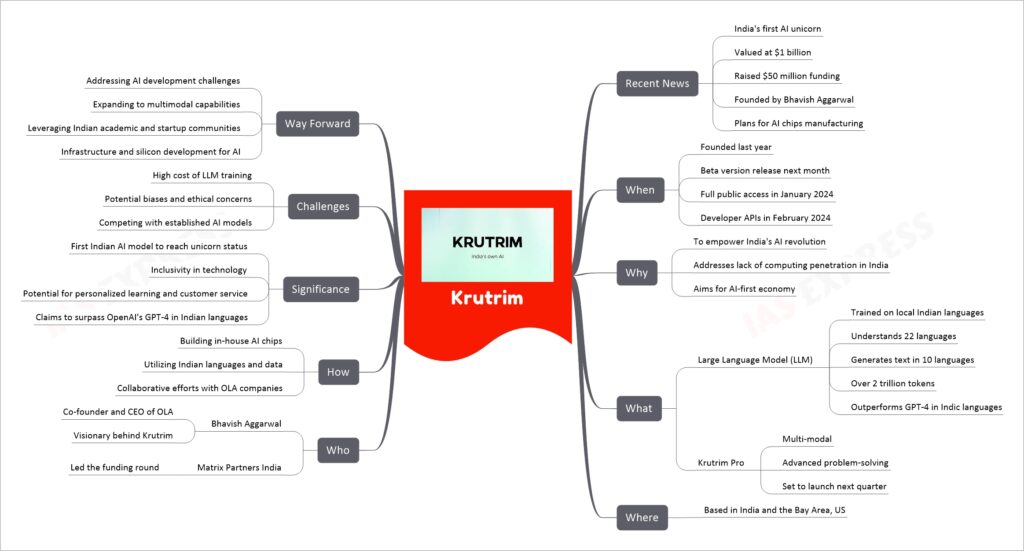Krutrim

Krutrim, an AI startup founded by Bhavish Aggarwal, has emerged as India’s first AI unicorn, achieving a valuation of $1 billion with a $50 million funding round. It represents a significant step for India’s participation in the global AI landscape, aiming to revolutionize the AI market by focusing on local Indian languages and data. Krutrim’s approach includes developing a large language model that understands multiple Indian languages, plans for an AI chip manufacturing capability, and creating a multimodal advanced version named Krutrim Pro. The venture signifies India’s ambition to be an AI-first economy, addressing the existing gap in computing penetration and aiming to make technology inclusive and accessible across diverse Indian languages.
If you like this post, please share your feedback in the comments section below so that we will upload more posts like this.

